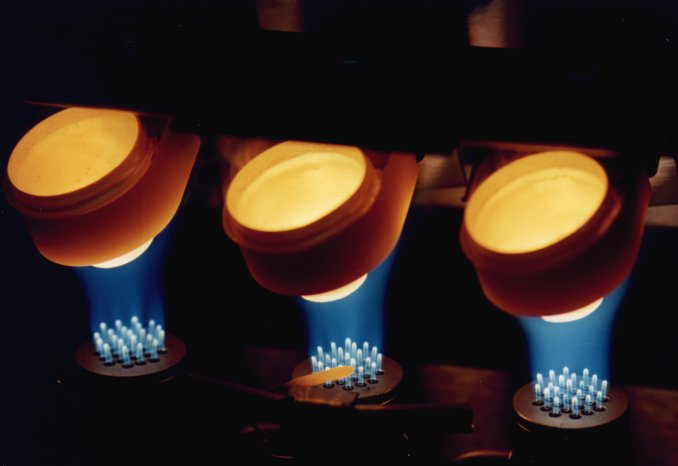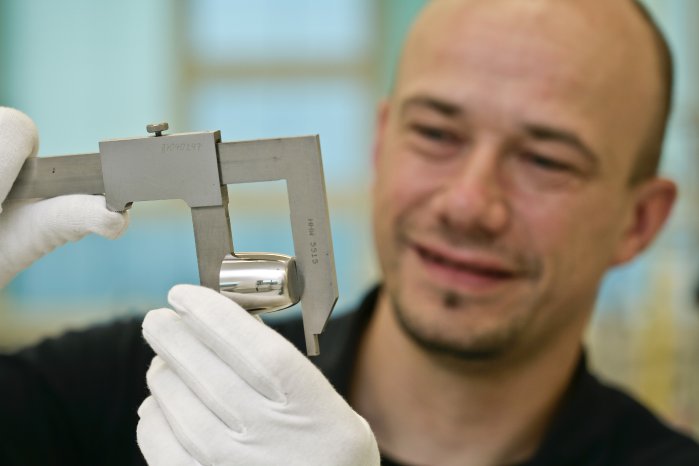- Heraeus demonstrates applications for precious analysis tools
- User support services for laboratory equipment helps prevent platinum poisons
Laboratory equipment made of platinum and platinum alloys is used in industrial and scientific laboratories around the world, both for chemical physics investigations and for X-ray fluorescence analysis. But a word of caution: It can happen that the valuable crucibles are ruined during laboratory use-because even platinum, a seemingly indestructible precious metal, has its enemies. Platinum poisons can appear in platinum crucibles during laboratory analyses, damaging them in the process. Heraeus offers services to prevent this failure as much as possible-from production to user support, recovery to recycling. The precious metals and technology group will demonstrate this at ACHEMA 2012, the world's largest trade show for chemical engineering, environmental protection, and biotechnology (Hall 4.1 / Booth G7) from June 18 to June 22 in Frankfurt, Germany. Heraeus is a global market leader in the production of platinum crucibles and casting dishes, making standard models and custom designs of laboratory equipment in a vast array of shapes and sizes.
Platinum poisons have destructive effects
Platinum's resistance to corrosion and high temperatures (melting point of platinum: 1,769°C) may give the impression that this precious metal is indestructible. But in reality, a number of platinum poisons can damage the material. Many of these poisons, such as sulfur, phosphorus, arsenic or lead are common in everyday laboratory activities. Under unfavorable conditions, these poisons can damage the platinum, causing cracks or pitting. "The experts at Heraeus draw on many years of expertise to help pinpoint the cause because contamination by a platinum poison and actual failure tend to occur separately, and because the number of platinum poisons is rather high," says Stefan Lang, sales manager at Heraeus Materials Technology.
The specialists at Heraeus are experienced in virtually all special cases and specific features associated with platinum laboratory equipment. A platinum crucible rarely fails all at once. Usually it is a gradual process: A platinum poison can cause a hairline fracture, for example, which then expands when the crucible is used, eventually destroying it entirely. Heraeus' materials experts examine the crucible and draw conclusions about the entire process based on the results. For example, if the Heraeus experts determine that sulfur (a platinum poison) was present in the melt, operators can then search their processes specifically for this material and Press release eliminate the cause of the failure. Heraeus is known for this approach to solving problems and for extensive, tailored customer support regarding material and design selection for crucibles and casting dishes. Advice can also be provided regarding the purpose and location of use, pretreatment of sample materials, and fusion choice, as well as temperature.
Sharing booth space with QCS and ChemPur
The quartz glass manufacturer QCS and Chempur Feinchemikalien und Forschungsbedarf GmbH will team up with Heraeus to exhibit their equipment and chemicals for analysis, research, and development in a laboratory setting (Hall 4.1 / Booth G7). "We had success at ACHEMA 2009 in presenting our customers from industrial and scientific laboratories with exhibits from Heraeus, Chempur, and QCS-three competent partners who work with precious metals, chemicals, and quartz glass," explains Stefan Lang. "Our product lines complement each other extremely well, and our products are used together in many fields. Visitors can access a broad range of information at a single booth, without having to spend time walking the entire building."


